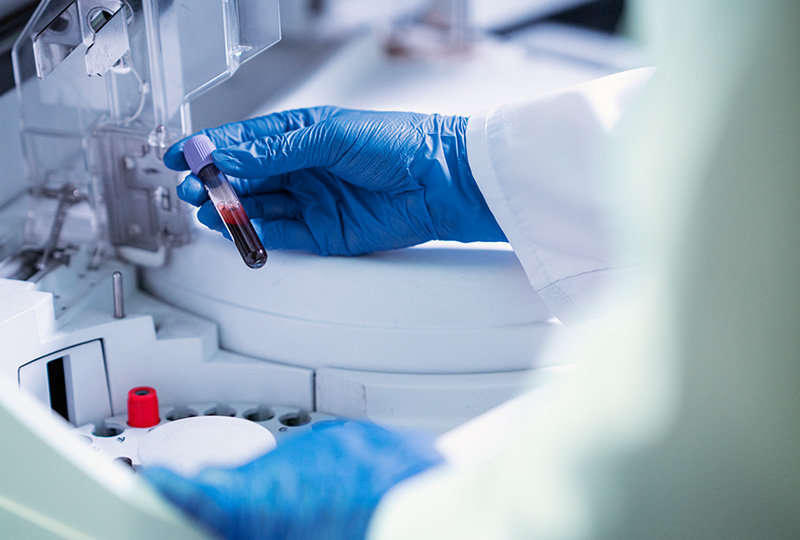Insights
Tackling the connected financial threats of sepsis and antimicrobial resistance

Sepsis is a more serious and multifaceted threat than you might realise. It is responsible for one in five deaths worldwide, can have lasting impacts on the lives of survivors, and places an increasing financial burden on healthcare systems.
Sepsis also poses threats to the wider economy. In the UK alone, its costs are estimated to be around £11.25 billion annually, with direct treatment accounting for roughly 10% of the expense. Current approaches to diagnosing sepsis have fundamental limitations, and sepsis treatment is also entangled with the emerging global threat of antimicrobial resistance (AMR).
Why does sepsis have such grave human and financial costs, and how can we improve the situation? At the core of the problem is that right now it is too slow to detect the cause of this life-threatening condition and to identify adequate treatment. To ensure our long-term health security, innovative solutions are needed.
Costly hospital stays
Sepsis is a condition where a body’s response to an infection fails to keep it contained. Subsequent inflammation can damage tissue and interfere with blood flow – preventing oxygen from reaching organs and tissues, potentially leading to organ failure and death.
When medics suspect sepsis, the current gold standard for determining the underlying cause to run a blood culture test. Samples are taken to a lab, where conditions are optimised for the growth of bacteria or other microorganisms that may be present within the blood. Unfortunately, little can be done to speed up the rate at which these harmful microorganisms multiply. It can take several days to establish if there is bacteria in the blood and to identify its antibiotic resistance – essential information for determining the right course of antibiotics.
Throughout a patient’s stay, hospitals incur multiple costs: tests (often several are required), medical staff, lab workers, and all the other expenses associated with occupying a hospital bed. Assuming an annual patient number of 260,000, it’s predicted that introducing targeted antibiotic therapy could result in £650 million in savings. That cash and the freed-up hospital beds through improved care could save lives.
Health costs don’t end with initial discharge and up to half of survivors develop post-sepsis  syndrome with symptoms including lethargy, muscle weakness, reduced organ function and 9.9% of people suffer from post-traumatic stress disorder (PTSD). The broader economic impacts of sepsis include:
- Mortality
- Prolonged spells out of work
- Follow up healthcare services
- Ongoing patient support
Sepsis symptoms require fast action. Patients experiencing septic shock are 8% more likely to die for every hour of delay in antibiotic administration. While awaiting blood culture results, doctors have little choice than to administer broad-spectrum antibiotics given the seriousness of the condition. This is essential first-line treatment, but this approach contributes to – and is threatened by – the problem of AMR that has emerged from decades of liberal use of antibiotics throughout society.
Sepsis and AMR: interconnected global threats
First things first: antibiotics have been a VERY good thing for humanity. Since Alexander Fleming’s discovery of penicillin in 1928, antibiotics have added more than 20 years to the average human life. Most of the drugs in use today were introduced to the market during the “golden era” of antibiotics, from the 1940s to the 1960s.
Over time, however, bacteria have evolved to resist our drugs, a process enhanced by over-prescription, improper use, and the widespread use of antibiotics in agriculture. Meanwhile, since the late 1980s there has been a sharp decline in new antibiotics. Much of the “low hanging fruit” has already been discovered, and incentives for developing new antibiotics are compromised by financial and regulatory hurdles.
Consequently, microbial infections are becoming increasingly hard to treat once again. In 2019, an estimated 4.95 million deaths worldwide were associated with bacterial AMR, with lower respiratory infections accounting for almost a third of fatalities. Some “everyday” conditions such as gonorrhoea are becoming difficult to shake off with antibiotics. AMR also undermines doctors’ ability to perform surgery and treat cancer patients – due to the increased risks of infection and weakened immune systems.
The World Bank estimates that by 2050 AMR impacts could wipe out at least 1% of annual global gross domestic product (GDP). This shortfall would translate to annual losses exceeding $1 trillion from 2030, with low-income nations experiencing the largest drops in growth. In Europe alone, AMR has been linked with losses of more than nine billion euros per year, and figures in the US are even greater due to higher healthcare costs. If we continue with our indiscriminate use of legacy antibiotics the problem will only get worse.
Within this context, there is a clear need for faster, more targeted detection of bacteria and its antibiotic resistance profile. Data-driven diagnostic tools will enable clinicians to treat sepsis patients sooner, while also helping to combat the issue of AMR. This technology can help to preserve our precious antibiotics for the patients who need them the most, while protecting the health and the economies of future generations.




